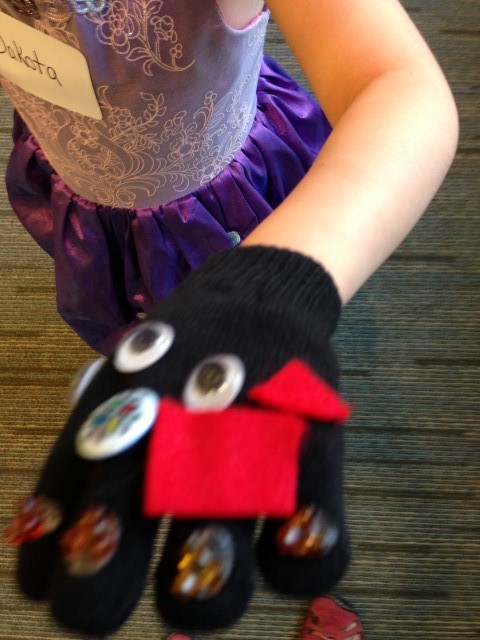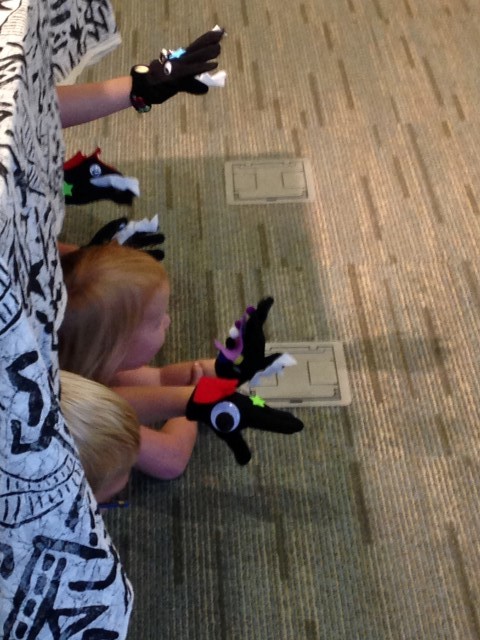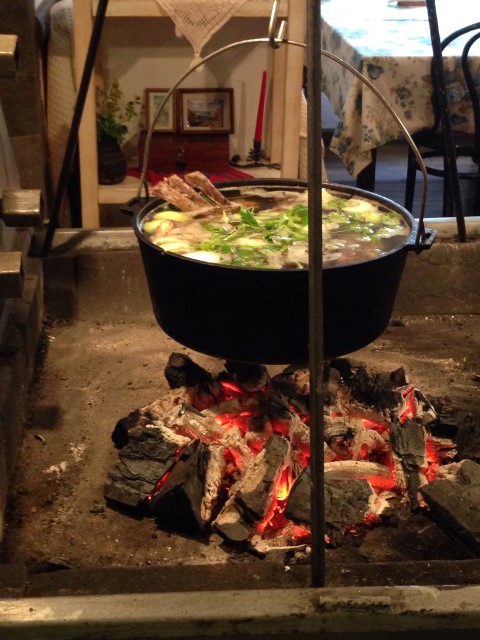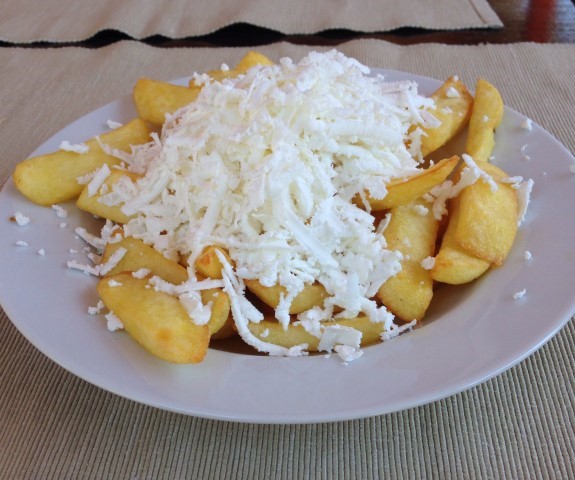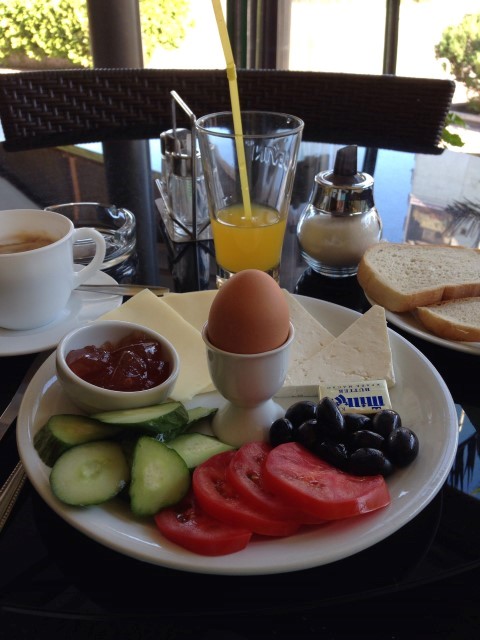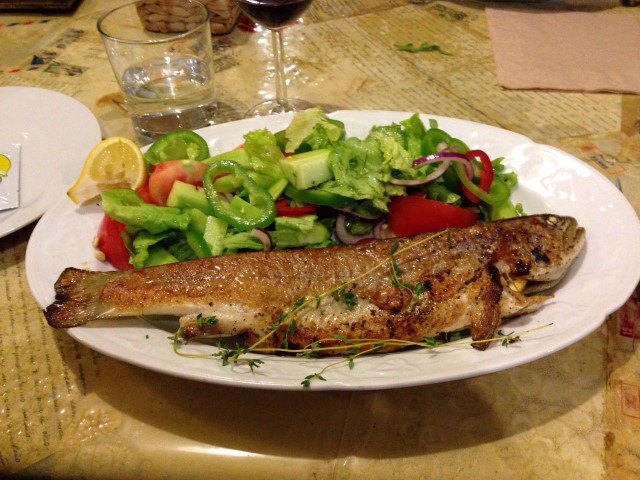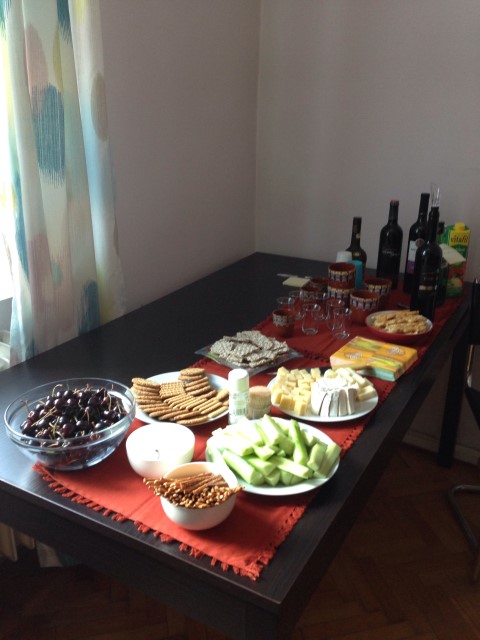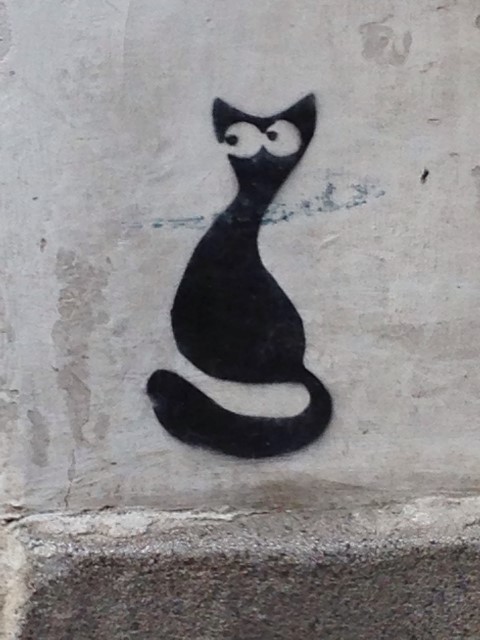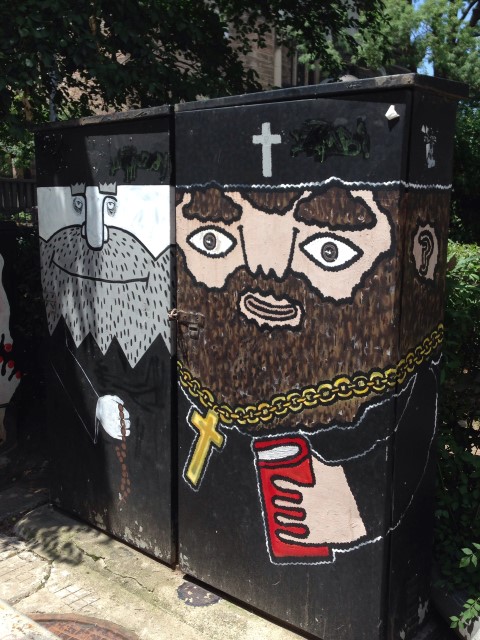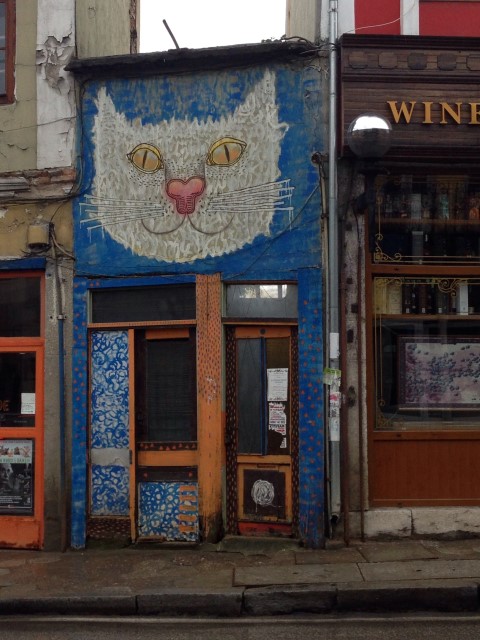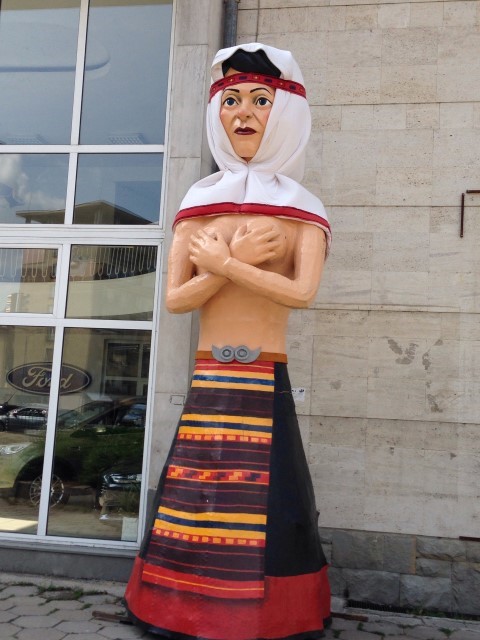Then there was the children's Blagolazh. The kids, age 4 to 12 with a couple of adult helpers, sat at big tables with microphones, like a press conference. They each told a story or a joke, all were encouraged by the audience. May they continue to tell stories!
After the jury awarded the prizes to the children, it was time for the grownups. After we took our seats at the tables, we introduced ourselves and the first round began. Some stories or jokes were told in dialect, some in standard Bulgarian. I understood a lot, but not all. I told a story about Nasrudin Hodja at the public baths to begin. Though the Hodja is the Turkish trickster, the Ottoman Empire extended into Bulgaria for 500 years, so his stories are here as well. I thought we were going to tell just one story and the jury would make a decision about the next round, but no, the jury invited us all to tell another short one. Uh-oh. I had two stories prepared in Bulgarian. Fortunately, my friend Roman the harmonica player had told me a short Clever Peter story on Friday. I silently blessed him and told that story.
While the jury deliberated, some of the past winners told stories and jokes. They're no longer eligible to compete but came along for the fun.
To my surprise, I made it to the second round. I told the second Nasrudin Hodja story I had prepared. We were asked for another, so I told a joke. I'm still not certain that it translated, but everybody laughed.
I thought we were going to have to do another story. In English, it would have been a snap. I've got a zillion stories in my head. In Bulgarian, it's a challenge. I was searching for one in my rattled brain and decided to explain that I didn't have another Bulgarian one but did have one from Vermont. The jury decided not to ask for another. Whew! While they went out of the hall to deliberate, we heard more from the past champions.
The grand winner was a young man, the youngest by far in the group, Orlin Kisyov (I think I was the second youngest, and I'm 53). It's nice to have a new generation coming along! This is one reason it's important to have the children's Blagolazh.
Here's Orlin, with the director of the House of Humor and Satire, Tatiana Tsankova:














































